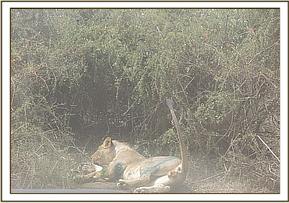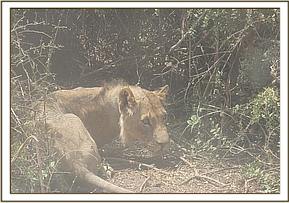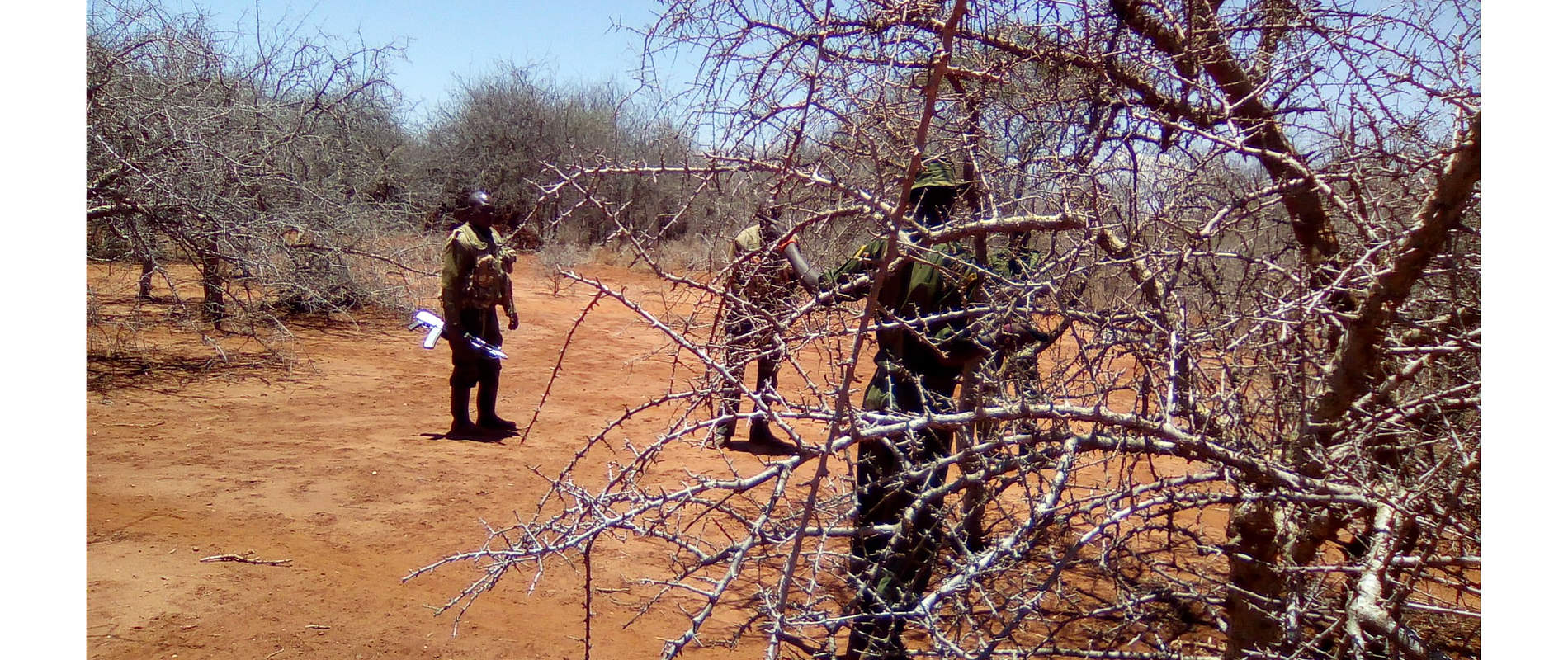The month under review has been a tough one
The month under review has been a tough one. The ruthless drought which has been encountered has devastated the entire ecosystem making victims of the young, the weak and the old. Only the strong and suitably adapted made it through the prevailing dry weather condition.
Although it has been a tough monthit is encouraging to see that there were few deaths encountered though poaching or human-wildlife conflict as both the domestics and wild animals brace up for the fight. More promising still was the absence of any infectious calamity or human-wildlife skirmish.
Following are veterinary activities attended to during the month;
1. GIRAFFE DEATH
Date: 02/10/2017
Species: Maasai Giraffe
Sex: Female
Age: Adult
Location: AA Lodge
History
A report concerning a fresh carcass of a dead giraffe was made by Big Life Foundation Security Officer to the resident vet based in Amboseli National Park Headquarters. This was after spotting several old carcasses within the ranches surrounding the park. This called for a concerted effort to find out whether deaths were due to infection or complications associated with ongoing dry season. The vet visited the scene for observation.
Autopsy Caution
The carcass was on left lateral recumbence. It was very fresh less than 12 hours old. It was in good body condition, but a precaution was taken after bloody tinged discharge was observed to be coming from nostrils bilaterally. The carcass was visited on the following day 3/10/2017 and found to have discharged more bloody discharge from both nostrils. The upper perineum was lightly scavenged on, the left ear and left eye. Another impression smear was made to compare with the first taken to be double sure of the cause.
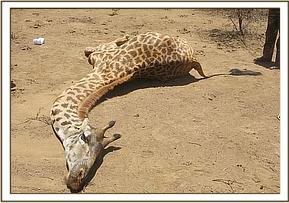
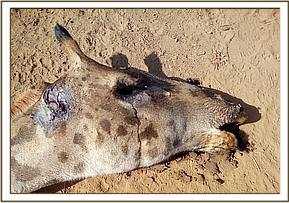
Laboratory Results
All slides were subjected to microscopic examination with a primary aim of anthrax test. All slides were negative of anthrax. It was presumed that the giraffe could have suffered trauma to the head region. The area within which the carcass was had in one month previously encountered three fatal car knocks on giraffe. The only doubt with this one is that it had died away from road edge which needed to be cleared first. Road signs have been considered to be erected along the road to warn the motorists.
2. SICK LESSER KUDU
Date: 2/10/2017
Species: Lesser Kudu
Sex: Male
Age: Adult
Location:Olkira; Amboseli Ecosystem
History
The lesser kudu had been orphaned and raised in Olkira Big Life Foundation Base for more than three years. The report of its’ illness was received from Big Life Foundation security manager.
Immobilization
It depicted dehydration by sunken eyes and pain by arched back. It was habituated so it was quietly approached by one of the accustomed ranger who held it by its horns. Its mucus membranes were more pinkish than normal. Its’ rectal dung was full of mucus and foul smelling. Cold water was generously poured on its body because of high ambient temperature and quick breathing exhibited by over exertion.
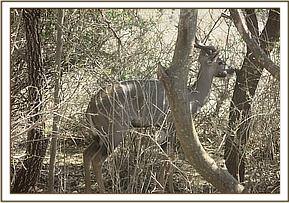
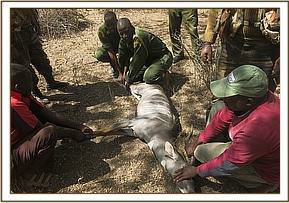
Treatment
Supportive treatment was offered with aim of relieving pain, increasing metabolism and appetite and taking care of any opportunistic bacterial infection. Whole blood in Plain and EDTA tubes was sampled as well as ticks for further examination. Microscope slide was prepared for microscopy. It was let go and left on sternal recumbence. It later succumbed after five minutes. An autopsy ensued immediately.
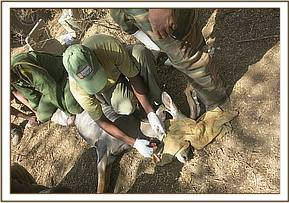
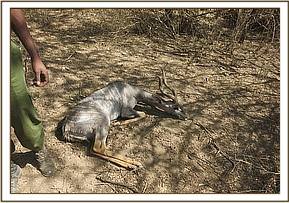
Postmortem observations
On opening the carcass there was hardly any fluids in the cavities. The omentum and serosae of visceral organs appeared slightly congested diffusely. It was noted that the pericardial sac was adherent tightly onto myocardium at various locations. The rumen appeared full of ingesta but small intestine posteriorly to rectum appeared almost empty with very little intestinal contents. Kidneys and livers were congested and slightly swollen. Lungs were paler and spongy. On opening the rumen a ball of various colours of plastic/polythene papers about one kilo was recovered partially blocking the entrance of ruminoreticulum orifice.
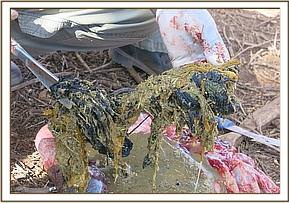
Postmortem Diagnosis
The plastic ball impaction witnessed caused the kudu to be off feed. This demonstrated severe mineral deficiency hence the pica. It presumably felt full but the ingesta could not be digested or absorbed because it could not get down the digestive system. This caused dehydration and starvation. The bleating witnessed was later thought to be either due to pain or fear of being restrained manually. It is thought that tentatively the animal died of shock. The three types of shocks thought to have potentiated one another to cause ultimate death are hypovolemic, anaphylactic and emotional/neurogenic type. Hypovolemic because of dehydration making blood volume low. Anaphylactic possibly because of adverse reaction to administered drugs and neurogenic possibly because of manual restraint stress offered during examination and treatment.
3. ELAND POSTMORTEM
Date: 3/10/2017
Species: Eland
Sex: Male
Age: Adult
Location: Kwa Kuku Kimana; Amboseli Ecosystem
History
The Mobile Unit vet was notified of a dead eland by Amboseli Community Warden. It had died near a homestead and there was fear of being converted into game meat. We rushed to the scene for postmortem.
Postmortem observations
Carcass was found on right lateral recumbence mid rocky hill head downward and tail up the hill. There was greenish ruminal discharge from the nostrils. The carcass was very fresh approximated about less than six hours old. After inquiry report it was established that it was chased down hill by village boys who found it within their residential area. It then tripped and fell down mid rocky hill. It had struggled to get up there after all in vain but drifted downwards by about five meters. There were signs of struggle within those five meters. There was peripheral venous engorgement especially of the head and neck.
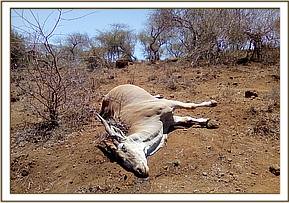
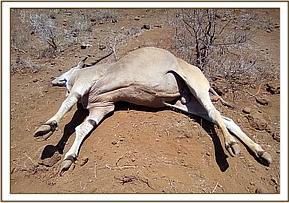
The carcass was opened. The serosae of visceral organs were moist and appeared normal devoid of any hemorrhage or congestion. On opening the trachea there was a narrow streak of clotted blood. The subcutaneous circulation of the head and neck was heavily congested, and the left eye had hemorrhage at conjuctivo-corneal junction. The myocardium on serosal surface had several less than one centimeter in diameter hydatid cysts. No important observation was made on the abdominal organs. Dentition was in poor state with severe molar erosion and interdentine fissures filled with dry grass. Some molars were loosely held in the teeth sockets.
Postmortem Diagnosis
This animal was old as depicted by its teeth. It was in poor health because of fatty tissue degeneration as witnessed with body fat stores. The animal tripped and was unable to get up soon enough because of lassitude exacerbated by current drought season. The animal was down more than twelve hours through which it struggled to alight but all in vain.
.
4. MAASAI GIRAFFE LASSITUDE
Date: 6/10/2017
Species: Maasai Giraffes
Sex: Two Females
Age: Adults
Location:Almarba and Noongotiak; Amboseli Ecosystem
History
The Mobile Unit vet while being on high alert concerning reported deaths of Maasai giraffe within the areas surrounding Amboseli National Park received a call from Park Community Warden and Big Life Foundation each reporting a giraffe on lateral recumbence and unable to get up.
Postmortem observations
Both animals were found on right lateral recumbence. All were alert and aware of human presence. Each was peddling and kicking expressing fear and trying to get up. More noticeable were bony prominences especially the spine and the pubis. Whole blood was sampled in EDTA and plain tubes for sera, whole blood and microscopic slides. Both animals were euthanized to eliminate further suffering and postmortem ensued.
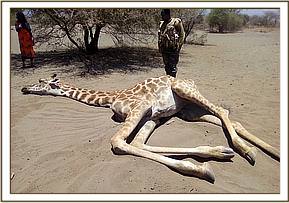
Important postmortem findings were recorded and they were similar to one another. The most striking feature was little muscle cover, lack of any fat deposit on brisket, perirenal, omentum and pericardial and coronary grooves.
Postmortem Diagnosis
These animals though moderately aged were very emaciated hence poor muscle cover. Their lethargic state is associated with ongoing lack of enough browse as dry weather continues to rec havoc. Many acacia trees within the environment are leafless and the green shrubs are very thorny. There is hardly any meaningful satiable available browse to support these animals’ lives’ especially within the niche where these deaths are being witnessed. Hopefully the rains will soon rain and ensure vegetation regeneration.
5. LAME ELEPHANT
Date: 7/10/2017
Species: African Elephant
Sex: Male
Age: Adult
Location:Serenkei Conservancy; Amboseli Ecosystem
History
A lame elephant was spotted by Serenkei conservancy rangers. It was said to be dragging its left hind foot severely in need of vet attention. The Mobile Unit vet responded after being assured of its’ sighting.
Pre-darting Observations
The elephant was said to have gone deep into a thick bush within unmotorable area. A foot approach was the only way to be able to examine the patient and decide the way forward. An examination when the elephant was still did not locate any injury or any discharge.It was observed that the animal could move fast enough to keep up with its herd. They were followed again for twenty minutes when they were located under shade. Along the track there was no discharge and it was established that the leg was dragged when in walk but not when running.
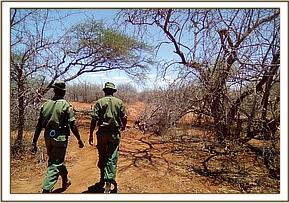
Prognosis
The animal was presumed to have an abnormal gait possibly from a healed trauma hence no need of treatment. The animal is not at any risk because it can reach out for nourishment and company. The prognosis is good.
6. ELEPHANT POSTMORTEM
Date: 8/10/2017
Species: Elephant
Sex: Female
Age: Juvenile
Location: Amboseli National Park
History
The juvenile death was reported by Park Community Warden who was on his usual normal patrol within the park. The Mobile Unit vet was within the area rescuing a buffalo which had gotten stuck in mud. We proceeded to the location of death for postmortem exercise.
Postmortem Observations
The carcass was found on sternal recumbence along elephant track. The area surrounding the carcass had traces of other members of the family trying to help the juvenile get up before death. Little predation had been done around the anus and on left eye. The carcass was fresh and had just begun to bloat. The carcass was poorly muscled, dehydrated and pale on serosae of abdominal organs. The peritoneal fluid was reddish black in colour. The spleen consistency was normal except little swelling. Liver was blackish and swollen with many round worms oozing from cut bile ducts. The right tusk had protruded out of cheek skin by 11cm while the left had not though it could be felt under the skin. Both were retrieved and handed over to park armory for safe custody and onward transmission.
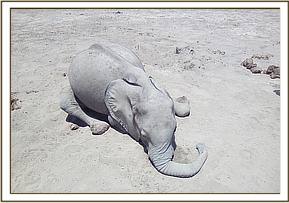
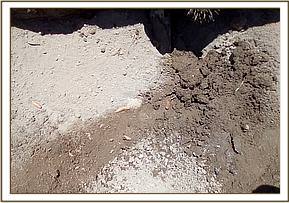
Postmortem Diagnosis
This death was presumed to have been caused by devastating drought which is currently being experienced. Elephants are travelling far away from the park and come back to park to seek water. The very young ones and any old or probably any weak are susceptible to lassitude which predispose them to death. The juvenile died on sternal recumbence while struggling to get up.
7. BUFFALO RESCUE
Date: 8/10/2017
Species: Buffalo
Sex: Male
Age: Adult
Location: Amboseli National Park
History
The Mobile Unit Vet was notified of a stuck buffalo by Park Security team who spotted it being stuck for over sixteen hours. We quickly rushed to intervene.
Rescue
The old bull was found on standing posture struggling to get out of sticky clay near the swamp edge about fifteen meters into swamp. It had spent the night there. Rescue was organized promptly by using ropes anchored around its horn base and the other end mounted on rear of pick up with an aim to pull it out. The pull was given the go ahead and it worked well. At the edge, nostrils were cleared of mud and the bull was given time to breath. Blindfold was placed on the face to calm it and minimize stress. Because of the tiredness the bull did not get up quickly from right lateral recumbence which was advantageous as it was left to rest and breath. The bull then got up and tried to fight back as it gained strength. Eventually it dropped the blindfold and charged at any vehicle which attempted to drive it away from the road. Lastly it moved off the road and was left to rest on its own.
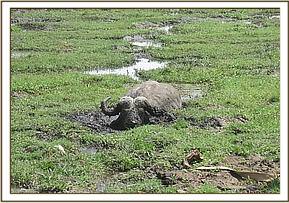
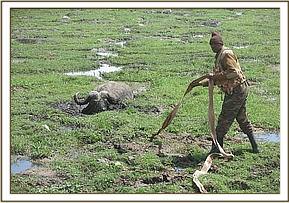

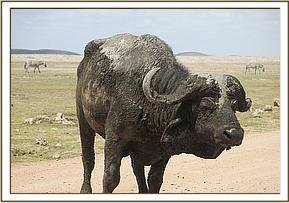
Prognosis
It has good prognosis because it can ambulate well to get nourishment and can fight predators. The blocked water way at nearby culvert will be unblocked to let water in to the area in order to lighten the sticky clay soil for animals to wade through easily as they graze and wallow inside the swamp.
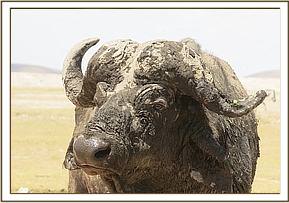
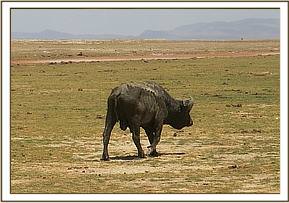
8. BUFFALO CALF RESCUE
Date: 9/10/2017
Species: Buffalo
Sex: Male
Age: Calf
Location: Amboseli National Park
History
A call concerning a needy buffalo calf was received from Amboseli National Park Senior Warden. It was said that the calf was beside the dam and that it had spent the night there because it had been spotted the previous evening. An intervention ensued immediately.
Rescue
The calf was approximated to be about three months old. The mother had succumbed possibly to prevailing drought conditions. There were no buffalo herds near and that the mother had died on an animal track. This was an indication that they had come to drink in the swamp but the mother collapsed almost a kilometer away.
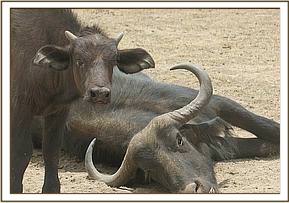
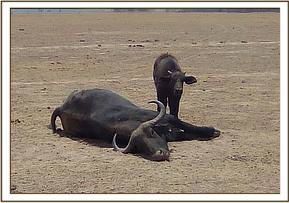
The calf had to be rescued for further care since it was still dependent. After contacting DSWT it was decided that the calf should be taken to the voi stockades where extra care could be offered. It was captured manually after a well fought resistance and injected with 30mgs Azaperone to calm it down. It was then loaded into an open pick up for its journey to Voi. At the stockade, they had been alerted hence we found a pre-prepared restraint boma where it could be kept for care. It was off-loaded manually and led to the boma by five men. It was left under nursery attendants for extra care.

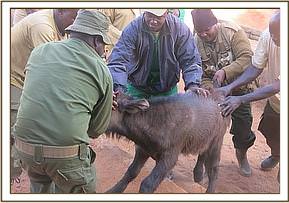
Prognosis
The calf has a favorable prognosis because all demands would be met in the nursery. It would also later join the already used orphans including two elands and a giraffe before later being released to join its wild counterparts who graze close to the stockade.
9. WILDEBEEST RESCUE
Date: 10/10/2017
Species: Wildebeest
Sex: Female
Age: Adult
Location: Amboseli National Park
History
On a usual patrol within the park, the Mobile Unit vet stumbled on a wildebeest which appeared to be lying at the swamp edge. This seemed to be abnormal because they are not known to wallow that way. We established that it had gotten stuck in the mud. We immediately began to pull it out.
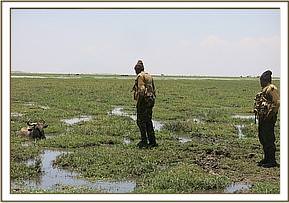
Rescue
The old dam was approached on foot as ropes were being prepared. It was tested whether it could get up without help but it couldn’t. It was pulled by the left horn by hand so that rope could be secured on the horn base without throwing. The rope was applied on the horn base and three men were enough to pull it out to the dry ground. It was placed on left lateral recumbence.

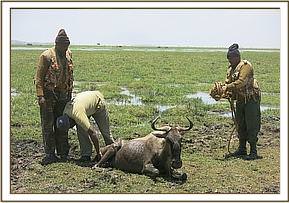
Prognosis
The animal was aged and in below average body condition. This predisposes it to the adverse effect of prevailing drought and also to predators. It has a guarded prognosis as a result. Chances of being stuck again cannot be ruled out because they are getting deep into swamp to graze on succulent vegetation which is the only palatable vegetation for now.

10. LION TREATMENT REVIEW
Date: 12/10/2017
Species: Lion
Sex: Male
Age: Adult
Location: Amboseli National Park
History
The lion has been monitored since its last treatment about a month ago. It was scheduled for review after ten days post initial treatment but has been elusive since then. We were directed to the thicket where it had hidden itself. According to the confirmatory sighting made it was the same lion which had been treated on 13/09/2017.
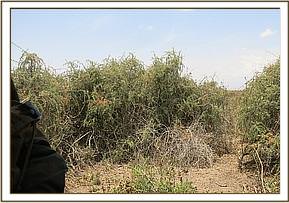
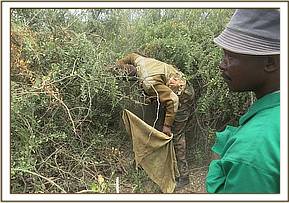
Immobilization&Examination
A 3cc dart composing of 450mgs Ketamine and 5mgs Medetomidine was made quickly about 200m away from the thicket where the lion was. It was approached on vehicle. After securing a clear path, it was darted on left rump successfully. It sprung and roared to face the direction where the dart had come from, but we stopped the engine and waited quietly. It had already plucked out the dart and chewed it but it was retrieved for safe custody. The left forelimb was discharging pus from two penetrating wounds. One at the back of the elbow joint and the other at radioulna laterally. The lion was not as fully engorged as it was during the initial treatment. The sepsis and swelling at the injury site has decreased tremendously with some puncture wounds healing completely.
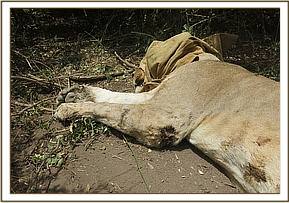
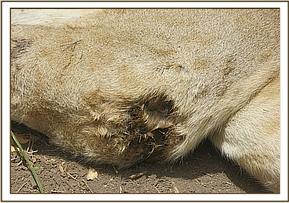
Treatment
The two discharging canals were pressed to express as much discharge as possible from the pus pockets. They were then infiltrated with 40ml Hydrogen Peroxide each and pressed manually to drain off.
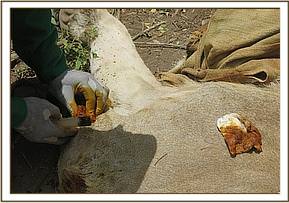
Tetracycline wound spray was inserted into the drained empty pus pockets and then packed with wet green clay to encourage tissue regeneration. Systemically it was injected with 3000mgs Amoxicillin, 15mlCynocobalamine and 7mlsFlunixine Meglumine all into muscles separately using separate syringes and needles. 8mgs Ivermectin was administered subcutaneously.
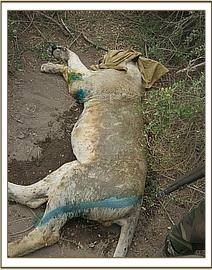
Prognosis
It has a favorable prognosis still because of tremendous improvement noted at the review time. Monitoring will continue and if sighted after twenty days a review will be necessary if discharges will be noted.
